There is a lot of misinformation on the internet about whether or not water heaters can sit on the floor. This is likely because most of the articles are outdated and people just repeat what they heard from someone else.
There are circumstances in which water heaters must be elevated, but it’s no longer a universally applicable regulation.

Gas water heaters can sit directly on the floor if they are rated as FVIR (flammable vapor ignition-resistant). All gas 30, 40, and 50-gallon water heaters sold to the North American market after 2005 must comply with ANSI Z21.10.1a-2002 standards and are FVIR.
Water Heater Elevation as per the Building Codes
Before I start anything related to home improvements, I dive into the International Residential Code (IRC), which is the blueprint for most state building codes. In light of all the opinion-based information out there, starting with cold hard facts helps you to weed out the bad resources.
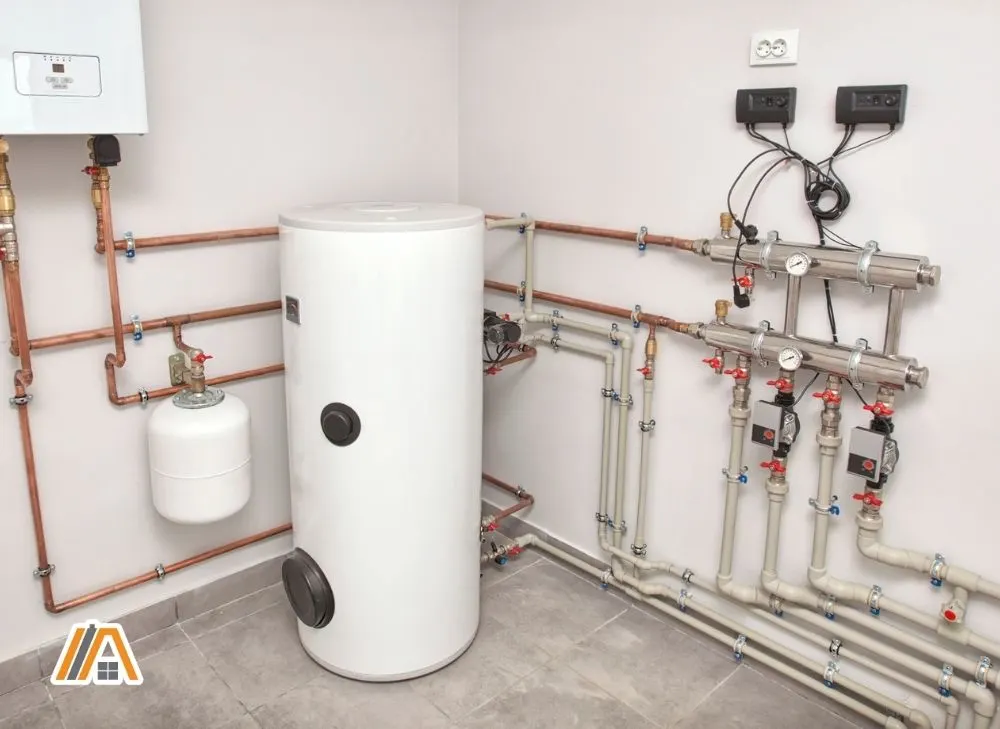
There are two sections of code that we need to look at. Both say essentially the same thing about elevating water heaters. There is no other mention of this in the IRC, so it is safe to say that elevation is only required in the circumstances defined in these two sections.
Section P2801.7 of the IRC refers to water heaters installed in garages and it says that elevation is required so that the ignition source is 18″ or more above the garage floor.
Section M1307.3 of the IRC refers to general mechanical appliances in the home. It also says that water heaters installed in garages must be elevated so that the ignition source is at least 18″ away from the floor.
This section goes on to add that non-living spaces that are connected to the garage also fall under this rule.
Defined exceptions to both of these regulations are water heaters listed as flammable vapor ignition-resistant (FVIR) appliances.
Unpacking the Codes
Now that we know what the IRC says, let’s get into what it means.
Firstly, the sections talk about water heaters with ignition sources. This means that we can automatically exclude electric water heaters from the 18″ elevation requirement.
The lack of any other information means that we can safely assume that all electric water heaters can be placed directly on the floor.
Secondly, the IRC clearly only talks about water heaters in garages requiring elevation. Anywhere else in the house, they can sit directly on the floor.
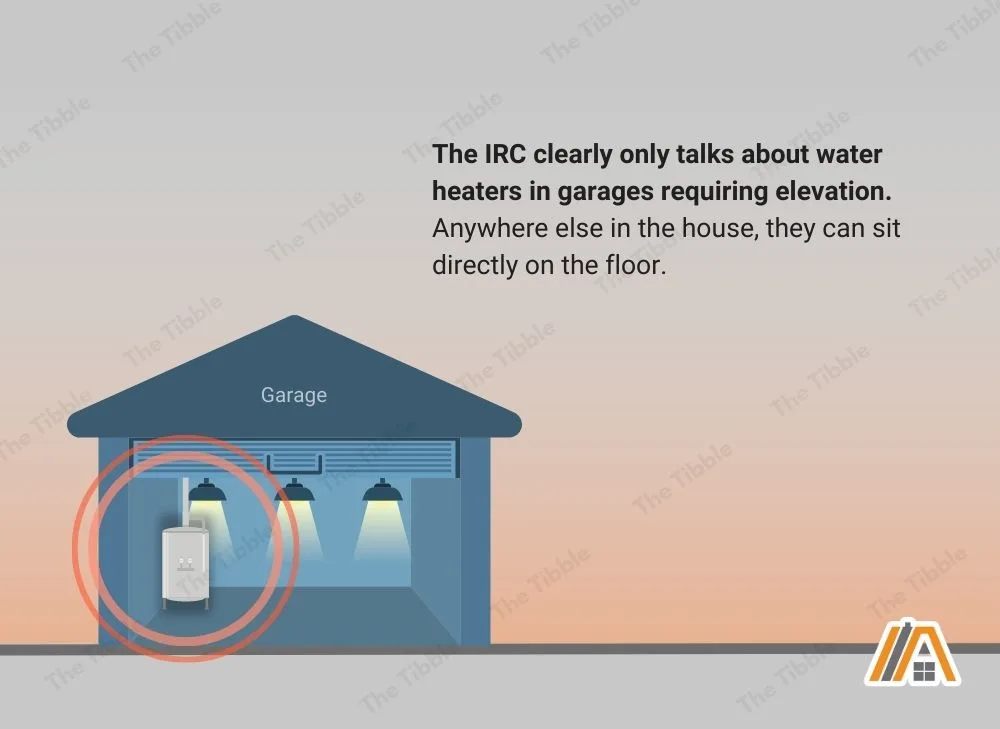
Finally, if your gas heater has the safety of an FVIR rating, then you do not need the elevation.
The idea is that in garages, there is more likely to be flammable substances on the ground, so you need to keep open flames and excessive heat away from the floor.
Gas water heaters with an FVIR rating are designed in such a way that vapors outside of the water heater cannot get close enough to the heat source to ignite (we’ll talk more about this later). This makes it safe for the heater to sit directly on the floor.
I will add a caveat here and say that you should ultimately follow the manufacturer instructions for appliance installation.
Some manufacturers require their water heaters to be elevated even if they are FVIR rated. This can be to achieve the certified energy rating, for inspection purposes, or just to legally cover all their bases.
So, yes, the elevation might not be necessary, but if you want your warranty to be valid or your insurance to pay out in the event of a water-heater related fire, following the instructions is your surest bet.
Check Local Codes
Local codes are based on the IRC but there are enough changes made on a state or even county level to warrant double checking your local codes.
This is also what’s going to help you if an inspector is insisting on the 18″ elevation. Either they are working with outdated information or the local codes are different to the IRC.
Why Were Water Heaters Elevated In The Past?
Many homeowners place their water heater in a garage. It is very likely that gasoline or paint thinner or something else flammable is stored in a garage.
Gas water heaters without FVIR are required to be installed so that the distance between the ground and the exposed pilot light is no less than 18″ to prevent accidental ignition of spilled combustible liquids such as gasoline, thinner, paint, etc.
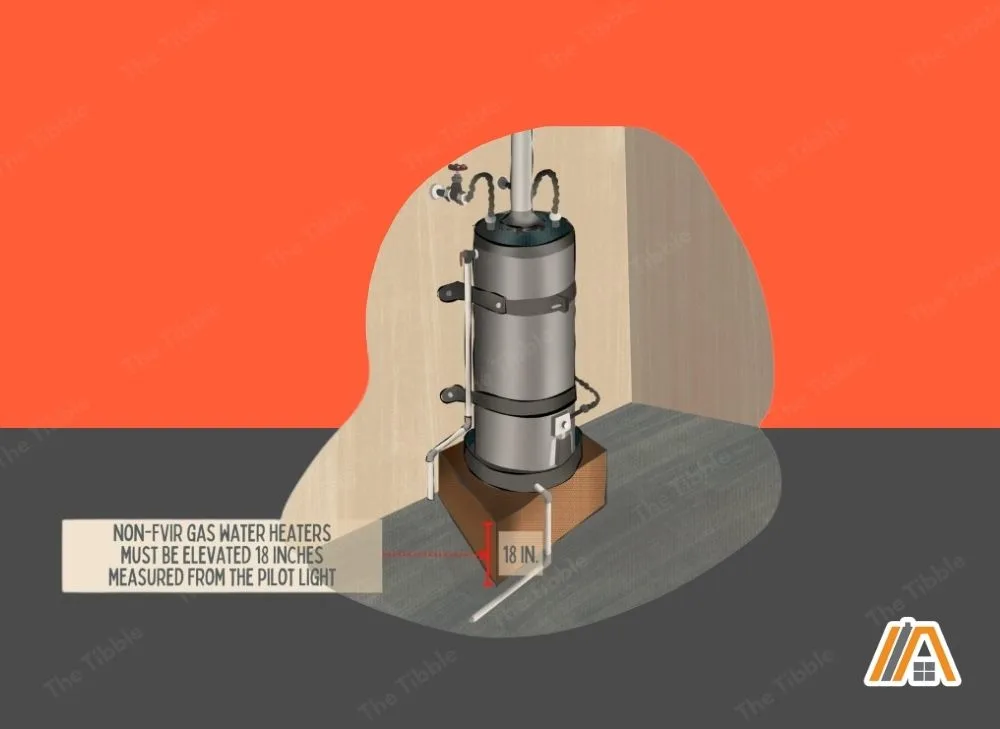
In FIVR models, the pilot light is not exposed.
If you are unsure if your gas water heater is FVIR then, by all means, install it 18 inches off the ground.
Are All Gas Water Heaters FVIR?
All 30-, 40-, and 50-gallon gas water heaters sold in North America after 2005 are FVIR rated. They must comply with ANSI Z21.10.1a-2002 standards, and according to this document, the fumes from spilled liquids cannot be at risk from being ignited by the pilot light.
Smaller than 30 gallon gas water heaters are not required to be FVIR rated, although I cannot find a good reason for this exception. Since that are not required to be FVIR rated, then they may have to be elevated by at least 18″, depending on how they are designed.
The same goes for tankless/instant gas water heaters.
The easiest and most reliable way to check if your water heater is FVIR rated is to check the owner’s manual. Google the product code + manual if you don’t have a physical copy.
Alternatively, If you visually see the pilot light or are able to light the pilot with a match, then you do not have an FVIR rated water heater and it must be elevated at least 18 inches.
Is There Any Other Reason to Elevate a Water Heater?
Even though most water heaters do not qualify for the elevation requirement, there are still advantages to raising them off the ground, especially in basements.
- Gas Water Heater Stand: Allows you to place your residential gas water heater 18-inches above the floor (as required by the National Fuel Gas and Plumbing Codes)
- Compatibility: Fits gas water heaters with a diameter of 22-inches or less and a capacity of 50-gallons
- Measurements: 21-inches x 21-inches x 18-inches
- Durable Construction: Constructed of durable, 18-gauge galvanized sheet metal
Last update on 2024-03-27 / Affiliate links / Images from Amazon Product Advertising API
Ease of Appliance Inspection
It is impossible to inspect the bottom of the water heater if it is sitting directly on the floor.
This might seem irrelevant now, when the water heater is new, but it is beneficial to have visual access to the bottom for the yearly inspection.
Regular inspection increases the chance of spotting any problems before they get out of hand.
Protection in the Event of Flooding
Water heaters are often placed in basements or garages (or basement garages), areas that are a little more prone to flooding than any homeowner would like.
In case of a flood, having the water heater off the ground gives you time to pump out the floodwater before any damage occurs.
This can also be helpful in crawl spaces, another potential location for water heaters and another spot that is at risk of flooding.
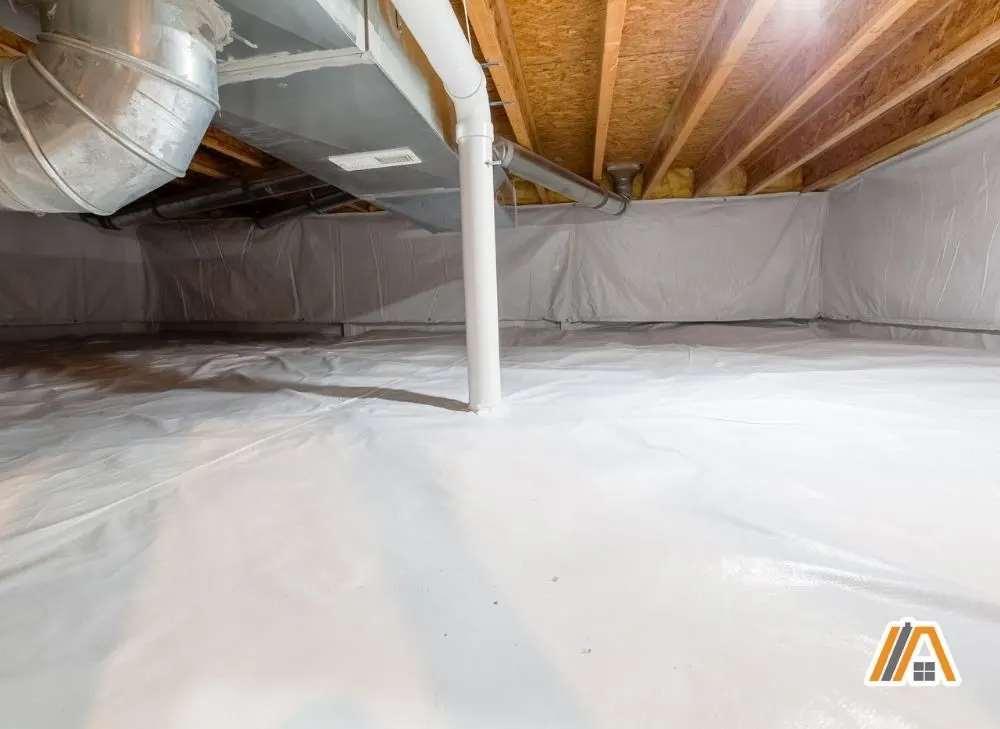
In crawl spaces, it also behooves you to keep the ignition away from dirt, which can clog up the ignition mechanism.
Draining the Water Heater
Water heaters have to be drained for a number of reasons.
- If the anode rod breaks off in the tank, draining it is one of the ways you can get the rod out.
- You should flush the tank about once a year to keep limescale and dirt from building up.
- Draining the tank is necessary for leak repairs (although repairs are not always the best solution).
It is easier to drain the water heater if it is higher off the ground, especially if the drain valve is plugged and must be cleaned before the water heater can be drained.
The last of the water contains the most contaminants, so that is what you want to remove, and sometimes it is difficult to empty the water heater completely when it is directly on the floor.
Does Raising the Water Heater Save Energy?
In the past, raising the water heater had the potential to save you some money. Sitting directly on a concrete slab meant that some of the thermal energy generated by the heater went to the cold slab as opposed to the water in the tank.
However, this is a much less relevant issue nowadays. Modern water heaters are insulated well to comply with energy efficiency regulations, so they lose very little heat.
There can be some marginal energy savings by lifting the water heater off a concrete floor. But in my opinion, the savings are so small, that it’s not worth the effort.
It’s not worth doing it just for the energy savings. However, if your basement/garage floor is often damp and there is a risk of flooding, so you’ll be buying a water heater stand anyway, the small energy savings will be a bonus.
Can You Put a Water Heater on Bricks?
One layer of bricks can be used to lift the water heater off the ground. This can help protect the water heater from moisture if the floor that it is sitting on is known to be damp from time to time.
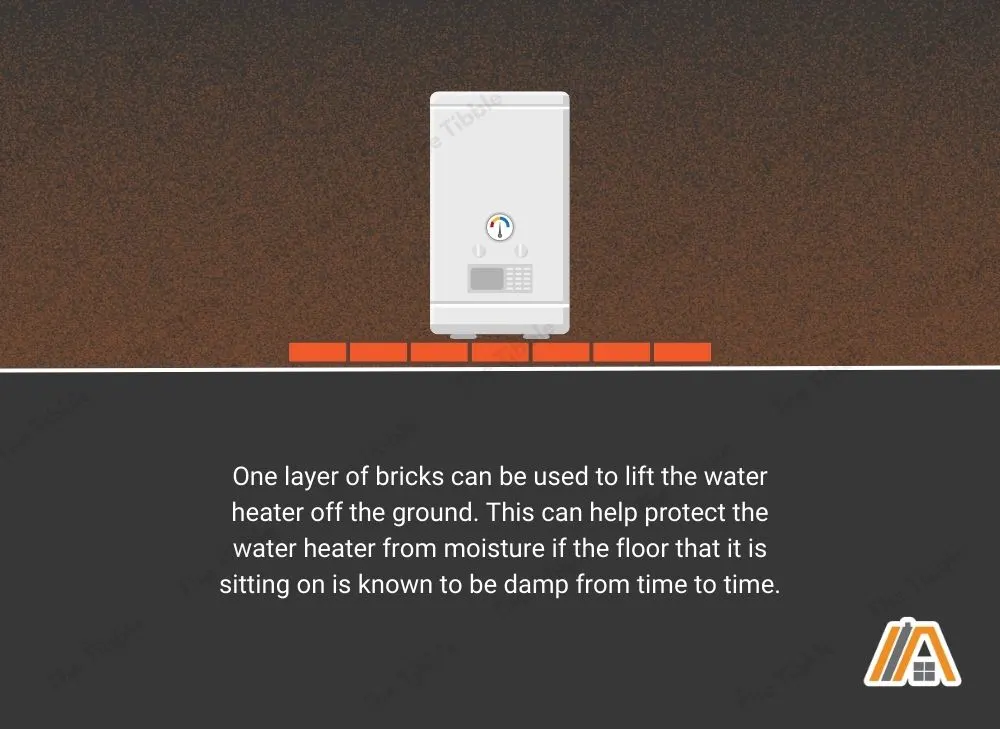
It is important to not stack the bricks on top of each other. Multiple layers of loose bricks will not make a sturdy base for the water heater. This is especially important in regions where earthquakes are common.
Invest in a quality water heater stand instead.

